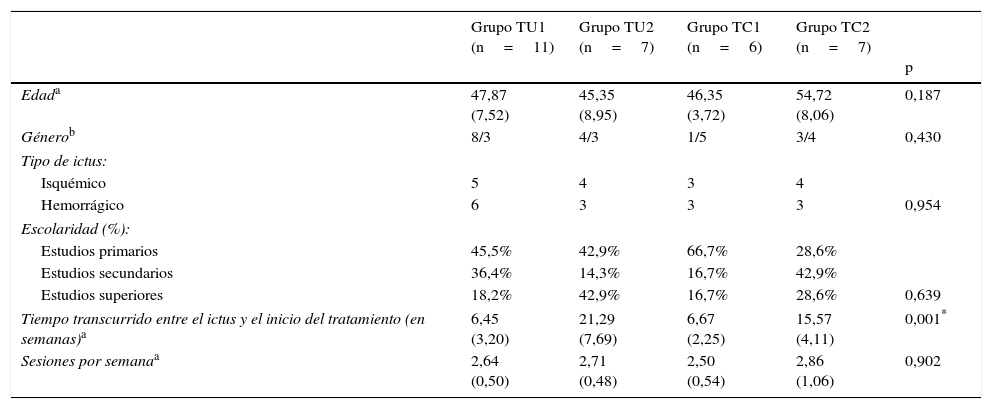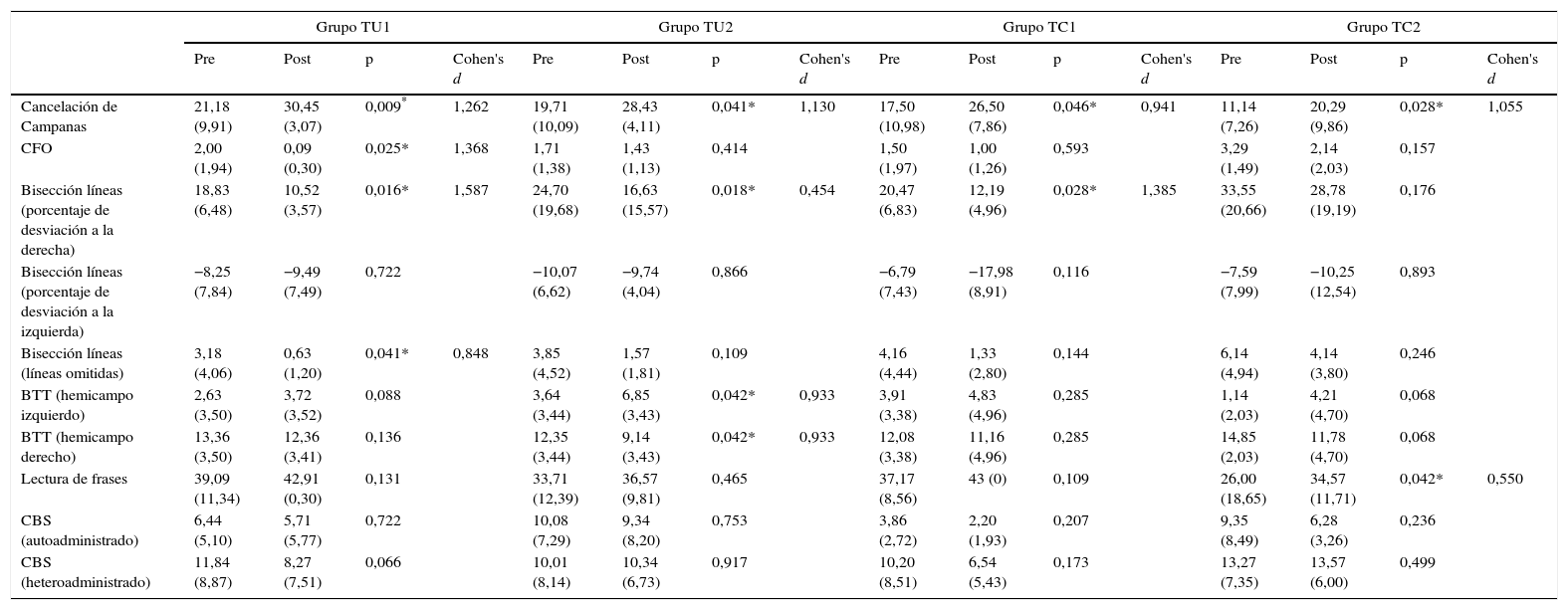Aproximadamente el 25-30% de los pacientes que presentan un ictus muestran signos de heminegligencia espacial. Los objetivos del presente trabajo fueron dos: 1) valorar cómo el tiempo transcurrido entre el ictus y el inicio de tratamiento repercute (o puede llegar a repercutir) en la mejora del paciente y 2) analizar la respuesta de los pacientes a dos tipos de tratamientos (tratamiento único: estimulación cognitiva informatizada vs. tratamiento combinado: estimulación cognitiva informatizada junto con la técnica del right hemifield eye-patching).
Material y métodoEnsayo clínico aleatorizado realizado con 31 pacientes. Dos grupos experimentales: grupo tratamiento único (n=18) y grupo tratamiento combinado (n=13). Cada grupo de tratamiento fue dividido en función del tiempo transcurrido entre el ictus y el inicio del tratamiento (≤ 12 semanas vs.>12 semanas). Todos ellos recibieron una media de 15 sesiones de rehabilitación cognitiva informatizada de una hora de duración mediante la plataforma de telerrehabilitación Guttmann, NeuroPersonalTrainer®, con la diferencia de que el grupo que recibió el tratamiento combinado ejecutó los ejercicios de rehabilitación con un dispositivo visual que llevaba el hemicampo derecho de cada ojo ocluido.
ResultadosLos resultados obtenidos tras aplicar los tratamientos indican cambios a nivel intragrupal en los cuatro grupos; sin embargo, no se obtienen diferencias intergrupales.
ConclusionesNi el tiempo transcurrido entre el ictus y el inicio del tratamiento, ni recibir un tratamiento combinado respecto a uno único, parecen ser variables concluyentes que influyan en la mejora de estos pacientes.
Approximately 25-30% of patients with stroke show signs of visuospatial neglect. The objectives of the present study were two-fold: 1) to assess how the time between stroke and the start of treatment impacts (or can impact) patient improvement, and 2) to analyse patient response to two treatments (single treatment: computerised cognitive stimulation vs. combination treatment: computerised cognitive stimulation with right hemifield eye-patching).
Material and methodA randomised clinical trial was conducted in 31 patients. These were grouped into two experimental groups: a single treatment group (n=18) and a combined treatment group (n=13). Each treatment group was divided according to the period that elapsed between the stroke and the start of treatment (≤ 12 weeks vs.>12 weeks). All received an average of 15 one-hour sessions of computerised cognitive rehabilitation using the Guttmann, NeuroPersonalTrainer® telerehabilitation platform. Patients in the combined treatment group performed the sessions wearing a visual device that occluded the right hemifield of each eye.
ResultsThe results obtained after application of these treatments indicated changes at the intragroup level in the four groups analysed. However, no between-group differences were found.
ConclusionsNeither the time between the stroke and the beginning of treatment nor the type of treatment received are conclusive variables influencing improvement in these patients.









